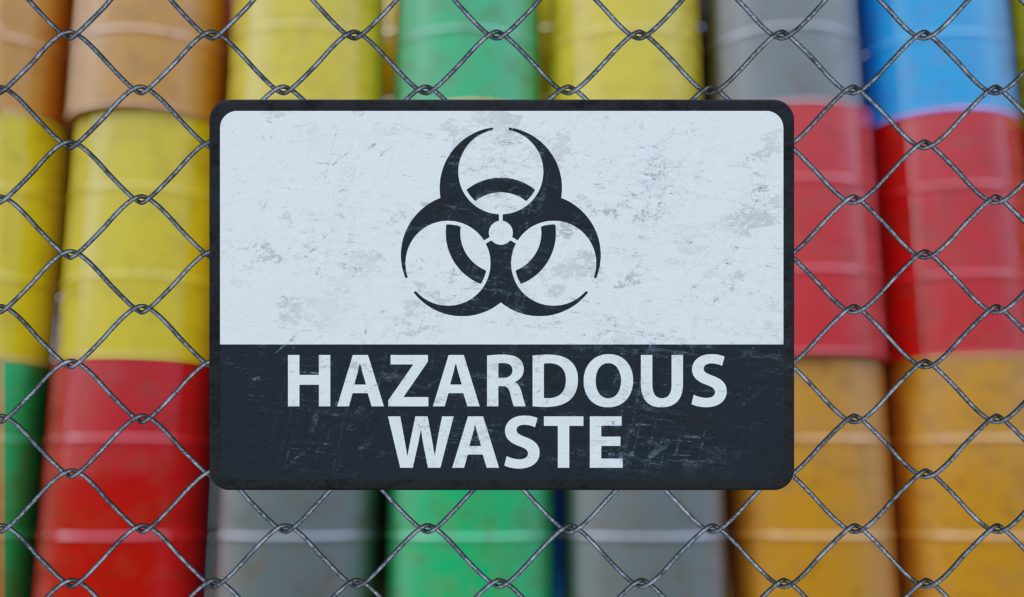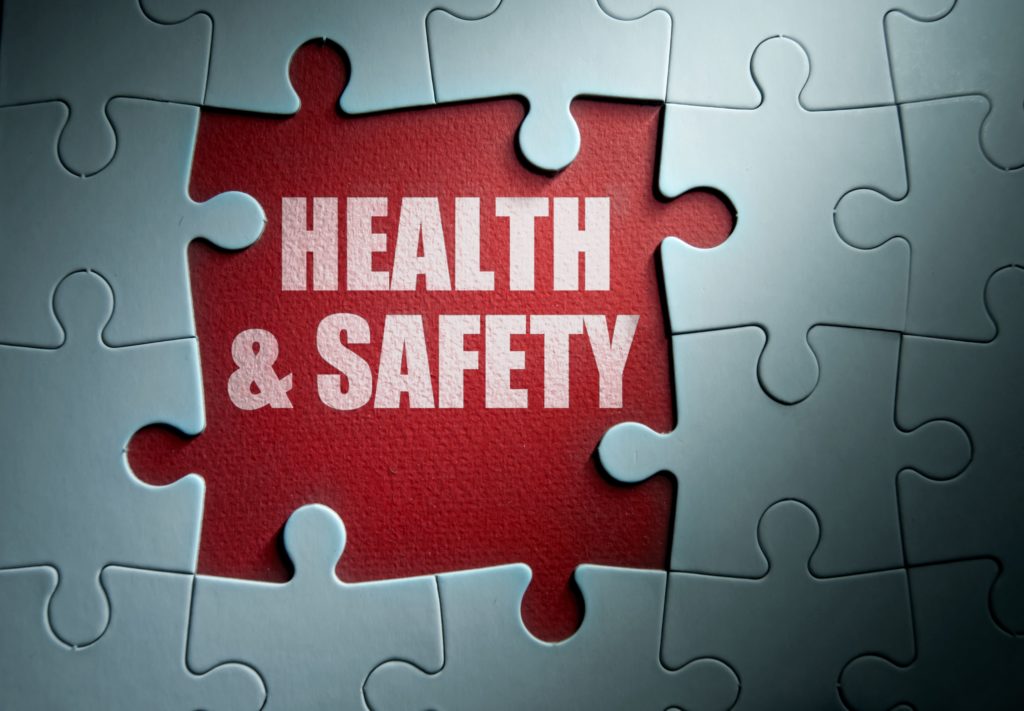HAZMAT and its Importance in Workplace Safety
HAZMAT is a commonly used abbreviation to refer to hazardous materials. Hazardous materials are dangerous goods that are chemical, biological, or radioactive and can cause harm to humans, flora, fauna, and the environment on its own or due to integration with other materials. Today, HAZMAT is widely used in industries and even homes (think pesticides and bleach). Not only does the scale, forms, and quantities of hazardous materials used by industries vary widely but the industries which use HAZMAT are also wide-ranging. Hence, it should not be surprising that in the United States hazardous materials are used in construction and mining operations, and for printing, textile manufacturing, and even dry cleaning.
The nature of HAZMAT makes it imperative for workers who work with or handle hazardous materials in the course of their work to comprehensively understand the composition of such hazardous substances, have the knowledge on its safe use, and the knowhow to react and act in instances of hazard-related emergencies in the workplace. As such, these workers are required by law to receive HAZMAT training with the aim of training individuals or teams in the safe use and disposal of hazardous substances and responding to accidents or disasters caused by the unforeseen release, spill, or leak of HAZMAT.

Oversight for Hazardous Material Handling
Considering the breadth and depth of the use of hazardous materials today, many agencies stringently regulate how, why, when, and where of hazardous materials. In the United States, the safe handling of hazardous materials is regulated by four health and safety governing bodies – the Occupational Safety and Health Administration (OSHA), the Environmental Protection Agency (EPA), the Department of Transportation (DOT), and the Nuclear Regulatory Commission (NRC). Due to the different focus areas and agendas of each of these agencies, how hazardous materials are described and defined diverges dependent on different standards and regulations being administered. For instance, OSHA’s goal is to reduce workplace injury and increase workplace safety (OSHA, n.d.), the EPA’s mission is focused on protecting human health and the environment (EPA, 2018), and DOT’s mission is “to ensure our Nation has the safest, most efficient and modern transportation system in the world…” (U.S. Department of Transportation, 2020)
However, an important point to note is that each agency invariable includes substances, atmospheres, gases, contaminants, and wastes as part of hazardous materials and often may confine definitions to align with the hazardous materials related to the OSHA regulation or DOT standard being addressed. For instance, OSHA has a pre-defined list of hazardous materials table which is often used across standards when referring to HAZMAT. Furthermore, OSHA’s Hazardous Waste Operations and Emergency Response (HAZWOPER) standard utilize a broad definition for hazardous materials which includes substances considered as hazardous by the Comprehensive Environmental Response Compensation and Liability Act (CERCLA), and hazardous materials as listed by the U.S. Department of Transportation under 49 CFR 172.101 and appendices.

HAZMAT Training and Certifications
Due to the increasing use of hazardous materials and substances in industrial settings, workplaces are inundated with myriad hazards. This has resulted in health and safety agencies such as OSHA, DOT, and the EPA regulating HAZMAT safety by making mandatory employee HAZMAT training which must be provided by their employers. These HAZMAT training courses are invariable diverse and extensive, covering a range of subjects, policies, and procedures. Furthermore, HAZMAT training programs are targeted at different occupations including electricians, technicians, lab technicians, construction workers, emergency personnel, drillers, geologists, builders, bricklayers, environmentalists, scientists, drivers, chemical engineers, plant operators, waste collectors, janitors, and security personnel. Besides, as many of these workers often work with toxic substances and in potentially hazardous environments, HAZMAT training conducted must deliver information on hazardous material identification, handling, storage, transportation, use, and disposal, as well as procedures to follow in case of an emergency arising due to a biohazard caused by misuse, leakage, or accidental release of a hazardous substance.
To ensure compliance, and worker safety and health, OSHA, EPA, and DOT require employers to conduct HAZMAT training courses for workers annually and, in many instances, obtain approved HAZMAT training certification of completion for different hazardous substances. As each of these agencies has its own rules and regulations albeit aligned to Federal Regulations, HAZMAT training course requirements also differ due to the varying focus areas of each agency requiring different safety compliances.
OSHA’s Emphasis on HAZMAT Training
OSHA places high importance on understanding the requirements of its Occupational Safety and Health Standards and extends this by requiring employers to not only train workers on handling hazards and hazardous materials while on the job but also by taking annual HAZMAT training certification courses. Besides, OSHA’s HAZMAT training focuses on different training needs for
- different aspects of hazardous material/dangerous goods handling and disposal,
- the diverse forms of hazardous materials,
- different categories and job roles of employees, and
- worker actions during HAZMAT disasters such as oil spills or emergencies where a toxic substance is accidentally released in a controlled area.
OSHA’s Standards cover general hazard and emergency training for workers as well as specific HAZMAT training related to specific hazardous substances and HAZMAT emergencies resulting from working with flammable liquids, asbestos, vinyl chloride, lead, arsenic, chromium, cadmium, benzene, explosive and blasting agents, toxic metals, Tularemia, liquefied petroleum gases, and a plethora of other chemicals and substances identified as hazardous materials.
OSHA Guided HAZMAT Training Program
Understanding the daunting task for employers to adequately conduct employee training courses, covering all required topics and subject areas, OSHA has developed detailed plans for HAZMAT training programs for general industry and specific HAZMAT training requirements for workers in construction, excavation, mining, agriculture, maritime and other industries. To further simplify the training process, OSHA has published an overview of the HAZMAT training requirements in its Training Requirements in OSHA Standards publication which acts as a guide for employers to develop HAZMAT training programs. This publication invariable captures the necessary training for workers working with hazardous materials and toxic and hazardous substances under the different Occupational Safety and Health Standards.
For example, the publication details the requirement for training workers working with explosive and blasting agents as defined and described under the Occupational Safety and Health General Standard subpart H on Hazardous Materials.
OSHA’s Hazard Communication Standard
The Hazard Communication Standard which is aligned with the Globally Harmonized System of Classification and Labeling of Chemicals (GHS) must be given due prominence when conducting HAZMAT training programs. This Standard is a fount of information on the classification of chemicals and communication of hazard information on labels and safety data sheets. Thus, employers can use this OSHA regulatory standard to develop HAZMAT training lessons and HAZMAT training coursework. Such guided HAZMAT training programs will ensure comprehensive information about hazardous chemicals being shared with trainees. Therefore, workers, supervisors, and managers who participate in a dangerous goods training course will be better equipped to practice safety procedures at worksites. We can, therefore, conclude that such HAZMAT training courses would make safety training more effective and employers compliant with OSHA regulations.

Hazardous Waste Management
According to the EPA, hazardous waste is defined as “a waste with properties that make it dangerous or capable of harming human health or the environment” (EPA, 2020). There are many sources through which hazardous waste is generated including construction sites, industrial manufacturing processes, and even the release of household pesticides and plastics into the environment. Just as there are myriad hazardous materials, hazardous waste also takes many forms -- liquids, solids, gases, and sludges. The increasing levels of hazardous waste today make understanding and managing such waste a part of HAZMAT training. This is emphasized by OSHA’s Hazardous Waste Operations and Emergency Response (HAZWOPER) Standard for the construction industry which has identified a range of HAZMAT training requirements for construction workers and construction work. For example, the Standard specifies training should be provided for gases, vapors, fumes, dust, and mists that may be inhaled, ingested, or absorbed through the skin by workers at construction sites. The Standard also specifies upper limits and acceptable limits for hazardous wastes and emphasizes regular medical surveillance for HAZMAT workers. HAZMAT training is also recommended for workers handling emergencies due to the release of hazardous waste. As such, HAZWOPER training is designed for different workers and job tasks at differing levels. The OSHA published Training Requirements in OSHA Standards is a good source for obtaining more information on HAZMAT training for workers.

Online HAZMAT Training
Making HAZWOPER and HAZMAT training even simpler are online safety and compliance training providers like us, providing employers and workers ready-to-use interactive online HAZMAT training programs that are geared to meet OSHA and DOT HAZMAT certification requirements.
Taking its cue from OSHA’s focus on worker health and safety, and the resultant mandatory and recommended training requirements for workers, supervisors, and managers; these HAZMAT training programs diligently cover all required aspects as dictated by OSHA. Thus, today there are many online employee HAZMAT training courses aimed at easing the burden on employers who must provide HAZWOPER and HAZMAT training and education aligned to OSHA regulations, EPA requirements, and DOT rules. To comply with the occupational health and safety standards of these safety agencies, many of these safety training programs have to be completed annually, and a certificate of completion to be obtained and filed. This explains the wide availability of the OSHA 40-Hour HAZWOPER, OSHA HAZWOPER 24 Hour, and the OSHA 8-Hour HAZWOPER Refresher training courses. There are also online courses dedicated to HAZMAT supervisor training such as the HAZWOPER 8 Hour Supervisor Training. Aligned to OSHA’s requirements for employers to train workers in specialist hazard materials, there are also online courses on OSHA Asbestos Awareness Training and OSHA Bloodborne Pathogens Training.

Significance of Employee HAZMAT Training
Employee HAZMAT training is much more than being ‘compliant’ with OSHA standards and regulations. When employers train employees working with hazardous and toxic materials there is a continuously increasing focus on the importance of worker health and safety while at work. HAZMAT training will result in many advantages for the employer including increasing employee motivation and feeling of security, enhancing organizational reputation, reducing the possibility of lawsuits on workplace/employer neglect, and curtailing HAZMAT accident compensation costs. While HAZMAT training is expensive to design, develop, and implement, these advantages will result in long-term sustainable benefits for employers and should be considered as a ‘good investment’ by organizational decision-makers.
References
EPA (2020, February 19). Hazardous Waste. Retrieved on July 18, 2020 from https://www.epa.gov/hw/learn-basics-hazardous-waste#hwid
EPA (2018, February 7). Our Mission and What We Do. Retrieved on July 18, 2020 from https://www.epa.gov/aboutepa/our-mission-and-what-we-do
OSHA, (n.d.). About OSHA. Retrieved on July 18, 2020 from https://www.osha.gov/aboutosha
U.S. Department of Transportation, (2020, January 29). About DOT. Retrieved on July 18, 2020 from https://www.transportation.gov/about




